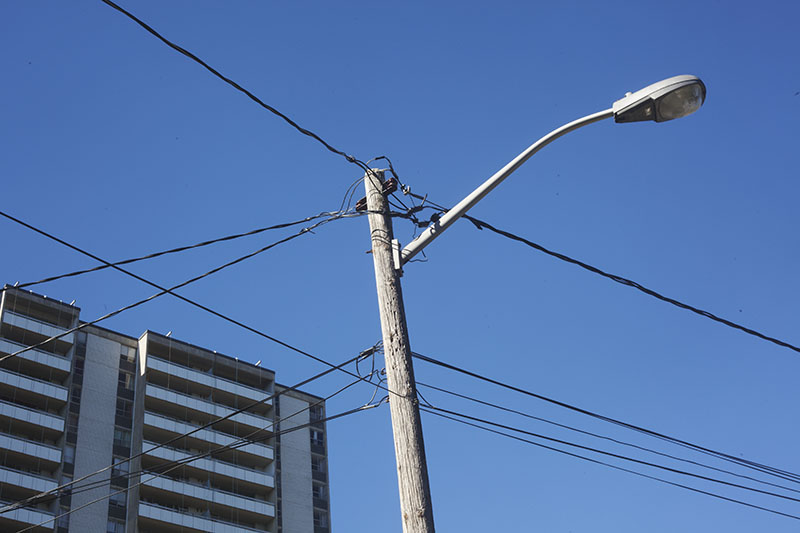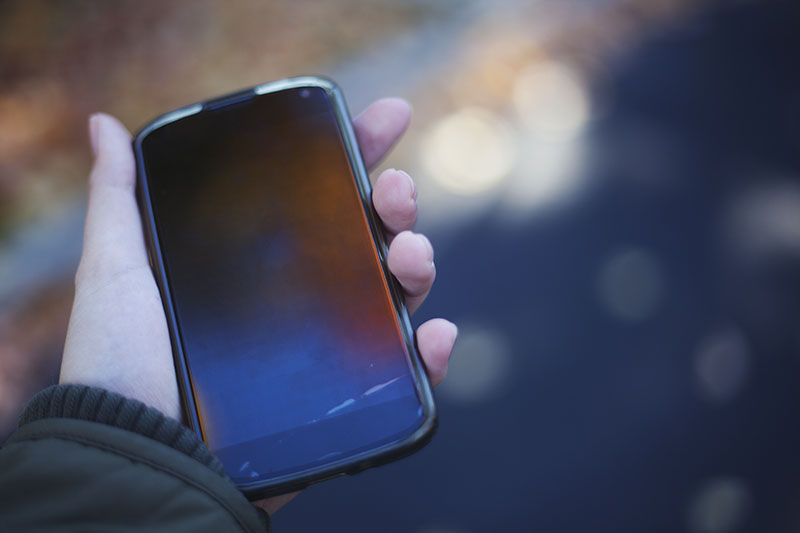Welcome to another round of Reader Questions. This time we’ll be discussing a two part question about EMPs raised by Bernard:
Bernard’s EMP Preparedness Question
I’m new to prepping. I’d like to get info on: 1. Communication after an EMP and/or 2. How to protect my electronics from an EMP.
Our Response: Post-EMP Communication Gear
First off, thanks Bernard for sending in your question. For those of you who do not know what an EMP is, let’s have a little background to start off with.

What is an EMP?
An EMP, or an electromagnetic pulse, is an electrical pulse that can wipe out the electrical grid as well as any electrical devices you may have unless they are magnetically shielded.
How Worried Should I Be About an EMP?
EMPs are commonly associated as a byproduct of a nuclear blast detonated above the earth’s atmosphere. There are also EMP bombs (without the nuclear element), and the risk of a super solar flare causing an EMP. All these possibilities are extremely rare, so no need to panic, but we’re here to prep for the extremely rare, so let’s dive in.
First of all, should an EMP ever strike, it will be unlikely that the entire power grid will come crashing down. Should we in the West happen to engage in warfare with a technologically advanced enemy, however, it becomes highly likely that EMP bombs will come into play, increasing the chances that many different parts of the US and Canada would be taken out electronically. But again, chances are that not the entire grid would be taken out, as that would be just too financially consuming. As the modern world is so dependent on electronic connectivity for commerce, military, and social ends, hitting even only a small part of the grid will prove beneficial to an enemy, as it would cost us billions, and affect us and our surroundings drastically. Therefore, it’s more likely that only a few major cities would be hit by an EMP bomb in case of warfare, as this would be enough to cause serious damage to a country.
To reiterate, this kind of thing happening is extremely unlikely. I will eventually write a full blown article about EMPs, but for now treat the above as a primer and let’s assume (for the sake of an argument) that an EMP blast hit the continental United States. Assume the grid as we know it has been knocked out where you live. Here you are in the aftermath trying to find a way of communicating beyond your immediate surroundings…
How Can We Communicate After an EMP?
The key in being able to communicate actually lies in being able to protect your device(s) during the initial pinch/pulse of the EMP, after which, should your device have been protected, it will remain perfectly usable. While your cellphone make work, however, there will be no promises that your cellphone network will be up and fully operational!
With that in mind, besides the obvious non-electronic means of interacting, I would suggest some sort of decentralized communication network/protocol that by definition does not depend on an established grid if you’re aiming to communicate after an EMP. The best option would be investing in a radio (short and long wave) like this CB radio here or a HAM radio, or both. Paired up with your more basic walkie talkie for short range communication, you should do just fine with communicating after an EMP. In theory, I imagine that telegraphs will also be fully functional, though I don’t see very much information about it online.

I will mention that the ideal choice for communication is a satellite phone because of its off grid capabilities by design. These phones support both voice and data transfer and come in a relatively small package. Note that satellite phones still need a phone plan to function. While they’re technically ideal, their entry price point isn’t quite feasible; satellite phones cost a lot and the plans they run on cost a lot as well. Inmarsat sets come with prepaid plans, but run over $600, and even then the units expire after only 180 days. I would suggest really researching the pros and cons of a satellite phone before purchasing one. Make sure you pay attention to the total cost of having and maintaining one of these, not just the individual device’s cost. If you need some help with researching, simply let us know and I can analyze and break down all the satellite phone options. Once again, however, please be aware that the price is overwhelming and can be pretty astronomical.
I have full faith that humanity will eventually be able to rise up after pretty much any disaster. However, in the short term, those of us with basic ways of acquiring news and knowledge will have definite advantages over others. There’s good reason to want to communicate after an EMP, but considering the extreme cost of the ideal form of communication, you may want to go with the less ideal alternatives and allocate extra funds elsewhere to boost other preps. You can live without ultimate communication. You can’t live without clean water and food.
How Can I Protect My Electronic Devices from an EMP?
The reality is that the dangers of EMPs are extremely over sensationalized. Many of the devices that you own, regardless of the fact that they’re electronic, will actually still work after an EMP. Many home appliances and commercial devices have built-in surge protectors that should protect your electronics in case of an EMP. Most electronic equipment not connected to the mains should survive an EMP as well, as most tests conducted with nuclear bombs and observed solar flares have very little electromagnetic impact beyond the immediate ground zero. It’s also worth mentioning that if a nuke detonated above your head, you probably wouldn’t be worrying about how to share that news on Facebook! ;) And travelling further out from ground zero increases the chances that the technology you’ll need to communicate is up and running. You really want to communicate after an EMP? Get out of ground zero and you’ll find tonnes of working communication tools.

The only true way of protecting your electronic equipment against an EMP is to use an EMP-proof container, like a faraday cage or, in a pinch, full metal cabinets. Ammunition cases or those galvanized steel bins should work. The thickness does not matter much. It helps, but it’s not the defining characteristic of an EMP-proof container. As long as the item is fully encased in metal, end-to-end, and the item you wish to protect is stored inside the metal box/faraday cage with the contents insulated and not touching the metal at all, your gear should be protected. The cage/box/container cannot have any gaps whatsoever, and once again, must be end-to-end encased in metal.
If you’re feeling especially worried, or have vital medical gear that depends on electronics, then wrap up a spare of the device in tin foil, place it inside a faraday cage and then place that cage inside your car. This will protect it against your average electromagnetic pulse.
If you have a survival, preparedness, or gear related question you’d like us to answer, don’t hesitate to let us know! Find out how to reach us via the contact page. Although we don’t publish every question we’re asked on the blog, we try our best to respond to each and every one we receive.
In case you’re interested, you can also view our past responses to reader questions here.
Have been looking into sat phones. Based on information from REI you can get a DeLorme sat phone for $300-$400 new. $24 annual fee to have an account, and you can initiate a 30-day usage plan from the phone itself whenever. Seems like a great low(er) cost option.
Sounds like hell of a deal & definitely a viable option!
I looked into this tip and discovered that DeLorme does not sell satphones. They sell GPS systems that allow SMS messages when tied through a Bluetooth connection to a smartphone. It may look like a phone, but it is nothing but a fancy GPS nav system.
Interesting, so it seems to me pretty damn useless. :( Such a shame. Thanks for updating us.
Read the record of the carrington event. It set the Telegraph equipment on fire. A emp is far more powerful. People are spending a lot of time and money on stuff and it will all burn when a emp sets there home etc on fire. I have purchased several fire extinguishers and am hoping I am home to fight it. Forget 911 the fire station will also be on fire along with the rest of town. The only people safe are homes that are off grid. Scary
Aye, it could get nasty very quick. Have you looked into fire blankets too?
I’d just like to point out a few details, as a Ham.
95% of what you can put your hands on right now will be useless post-EMP, as it’s all discrete logic components and digital. You need to get your hands on some 1970’s or earlier equipment when it was all analog and tubes. That also means you’re likely working on HF (160M [1.7MHz] through 10M [29.7MHz]) and possibly 6M [50MHz] depending on equipment.
Most communication is on 20M & 40M, depending if you want local or international. 100W on 20M with an improvised antenna will get the middle of Europe from Canada if conditions are right. You can run all day on a car battery at the typical 5/5/90 cycle, and obviously traffic either way will affect battery life.
The beauty of Ham radio is that we can be up and running very quickly, needing little more than a high enough structure for antenna (and a ladder leaning against a truck works), and as long as someone else is listening we can get out. I know of at least 2 instances where amateur radio was the primary communication, after natural disasters knocked out phone lines and took out cell towers.
You can pick up an older radio for dirt cheap if you are licensed to repair it, and tubes are about $10 a piece. So for less than $100 you can be up and running on 20M and know an EMP won’t shut you down.
Some great advice right there! Thank you for sharing.
Yes I agree with you and I have three radios that will survive the EMP HW100 and Kenwood TS520
Hi,
I know you wrote this in 2017 but I am interested in learning more if you could add some links to info. Thank you!
Several years ago APS lost one very large transformer in Phoenix. It took about 3 months just to replace that one transformer. There is almost no inventory and a very long lead time to build one. Add to that a very slow road trip for delivery on a special truck that only goes about 5 mph. Multiply that times hundreds all over the U.S. Six months is a mission impossible. It will be decades.
For rural area’s it will definitely be a long, arduous process. I wonder what contingency plans the government has if this ever happened….
The state facility I work at has a generator and fuel tank but it is only connected to critical systems. A strong HEMP may take it out any way.
I am working on plans for a large UPS for my freezer etc that is powered by a bank of deep cycle batteries that are charged by a solar panel.
Sounds like a solid plan!
I believe that CB radio is your best bet after an EMP event, Better chance that someone in your area will have a CB, than a Ham rig, besides the fact that a ham radio, might be on one of several bands, so you would have to be on the same band with yours to communicate.
I worked hardening the B52 against EMP back in the 70s, you could use any metal container as a Faraday shield, but it must be completely sealed by metal, any gap, will destroy its effectiveness. The Aluminum tape will work to seal the gaps, By gaps I mean any and all, where the lid connects to the body of the can, no matter how tight it appears to be, needs to be sealed.
I disagree with the idea that an EMP event will not take down the entire power grid, it will if the trigger is above 200 miles high. It will take several months to repair the damage and get the grid back if, so be prepared to be without power for an indefinite time, I would figure on at least 3 months and plan for at least 6 months.
That info about using aluminum tape to seal containers is fantastic! I agree that downtime is very possible but the way so many blogs make EMP’s sound, its almost cataclysmic in nature.
In my experience, humans are pretty resilient and we tend to be able to handle far more than expected- the grid being down sucks but its not the end of the world.
Planning for 6 months is definitely wise. Good tips gale.
What CB channel do you recommend tuning to?
https://www.cobra.com/news/using-cb-radio-emergency-communication-it-can-still-save-your-life looks like a decent overview, I don’t have much experience on the matter so I will differ to the pro’s.
No need to wonder what channel to listen to. I have multiple CB radios for communications and a 1000 channel scanner receiver that is programed for CB, marine, fire, police, etc. so I can listen to everybody.
In a Pinch, a Microwave Oven is a Faraday Cage!!
Test any thing you may use as a faraday cage. Stick a cell phone in it and call it. If it rings inside your microwave etc. it won’t work.
Those cheap tins that candy, popcorn etc. come in will work fine for faraday boxes and are almost free.
If you seal the with a metallic tape, and make sure that the electronics does not touch the metal of the tin, they might be ok., otherwise you don’t have the protection.
The original faraday cages were made of wire mesh and the objects inside were clearly visible. sealing with metal tape is only needed if the gap is of a size and shape to let electromagnetic waves pass thru. Test your cage or box with a cell phone as I suggested earlier. If the phone rings the electromagnetic waves are getting thru and it won’t protect anything. If the phone test works then no tape is needed, the box is working. You are correct that the contents still needs to be electrically insulated from touching the box. I failed to say that all of my items inside the faraday cage/metal can are packed in there original boxes and them stored in Ziploc bags as both electrical and moisture barriers.
Do we have ‘prepping’ in the UK? I don’t know anyone who dales it. Is it just a North American thing?
Yes you do indeed, plenty of bushcraft forums and preppers alike- don’t get hung up on the name and instead keep your mind open for like minded people. Not everyone will identify as a “prepper” but rather a survivalist, bushcrafter or even a primitive living enthusiast.